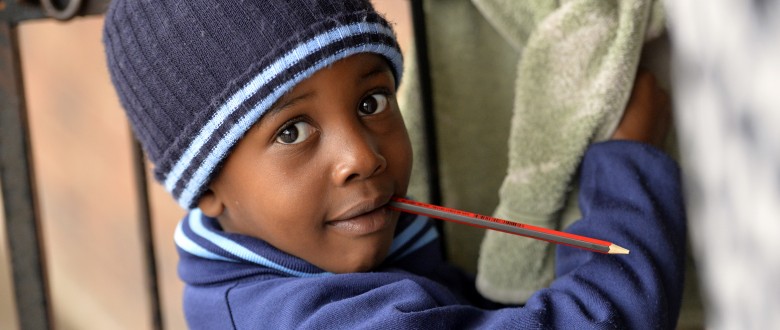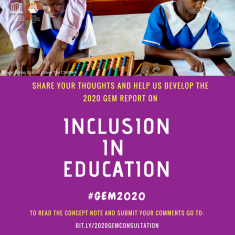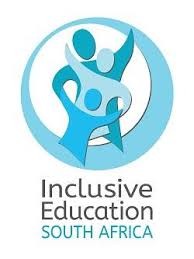
For decades, the international community has tried to get inclusive education right. The 2020 GEM Report on inclusion gives the discussion new momentum. From our year-long unique experience working on inclusive education in partnership with the South African Department of Basic Education, VVOB puts forward 5 good practices for inclusion.
Inclusive education: what’s in a name?
The global agenda for inclusive education is one with many stakeholders, and at least as many conceptual definitions. Originally, the concept was understood as one related to disability for which health professionals bore responsibility. But an evolution towards a broader understanding of inclusive education started on a small scale in the seventies – with some countries placing children with disabilities in regular schools – and on a global scale since the nineties.
The Salamanca Statement of 1994 for example agreed that inclusive education should not be limited to learners with special needs only but should recognise that “every child has unique characteristics, interests, abilities and learning needs”. The Dakar Framework for Action 2000 upheld these principles of ‘education for all’ as an inherently inclusive concept, listing more specifically vulnerable groups like working children, ethnic and linguistic minorities, learners affected by conflict, among many others.
Under Sustainable Development Goal 4 on quality education for all, the international community emphasises inclusion and equity as foundations for quality education and learning. It also calls for building and upgrading education facilities that are child-, disability-, and gender-sensitive and for providing safe, non-violent, inclusive and effective learning environments for all.
GEM Report on inclusion
Today, the inclusive education community agrees on a broad understanding of inclusive education, but a firm consensus on what this means is still lacking. For example, interest groups for learners with disabilities are pushing back, claiming the concept is being interpreted too broadly. Moreover, at government level, countries use different definitions of inclusive education in their existing policies and laws. An international discussion on inclusive education can only be held in murky waters, to say the least.
The UNESCO concept note for the 2020 Global Education Monitoring (GEM) Report on inclusion acknowledges this complex field of study. The GEM Report will ultimately take the view that “the mechanisms of exclusion are common regardless of group" and will "cover all mechanisms that expose children, youth and adults to exclusion risks, while maintaining a special focus on people with disabilities, a group which has received less coverage in past reports".
The note stimulates discussion among stakeholders and invites us all to give feedback. It also narrows the framework of the GEM Report down to what they call the ‘elements of inclusion’, such as national legal frameworks and education policies, teachers, school leaders and education support personnel, governance and finance, curricula and learning materials, facilities and infrastructure, and involvement of communities. You can read it in full here.

Forerunner South Africa
In South Africa, VVOB works in partnership with the national Department of Basic Education (DBE) on inclusion and as such has a unique insight into how inclusive education is put into practice in the country. DBE is in fact a forerunner of inclusive education in its own way, with a separate Inclusive Education Directorate, a rarity globally speaking.
The road to inclusive education in South Africa started at policy level. With its White Paper 6 in 2001, DBE planned for 500 primary schools to be transformed into full-service schools, i.e. schools that cater to all children irrespective of (dis)abilities or any other barrier to learning. DBE’s logic is, as stated in the guidelines for full-services schools, that “ordinary schools with an inclusive orientation are the most effective means of combating discriminatory attitudes, creating welcoming societies, building an inclusive society and achieving education for all” (2010). Institutionally speaking, South Africa upholds a broad view of inclusive education policies. The 2014 policy on Screening, Identification, Assessment and Support (SIAS) appeals for the establishment of additional effective support systems for schools to address barriers to learning. The policy underpins the sound principle that education systems should adapt to children, not the other way around.
VVOB and inclusive education
So where does VVOB – education for development fit in? As an organisation, we too stand behind a broad definition of inclusive education.
The global education system should mitigate all barriers to learning, whether related to intrinsic barriers such as disabilities and psycho-social problems, or extrinsic barriers such as ethnic background, poverty, conflict, abuse and neglect. VVOB also recognises that inadequacies in education systems and pedagogy can pose major barriers to learning for all children, particularly and more profoundly in developing countries.
School leaders and teachers are crucial links in the inclusion chain. The GEM Report acknowledges this and will investigate how well prepared these actors are to accommodate learners of all abilities and backgrounds, and how well they are supported. Their motivation and commitment to inclusive education are essential and should not be taken for granted in systems that are inclusive at policy level. Indeed, teachers in particular need to value learner diversity in their classrooms for them to apply an inclusive pedagogy.
VVOB’s global mission centres on capacitating teachers and school leaders with the skills and knowledge to provide quality education to all learners. In South Africa particularly, those skills and knowledge are heavily influenced by the inclusion framework, a choice motivated by our partner DBE’s own commitment to inclusive education.
On top of the above-mentioned policies that built on White Paper 6, VVOB’s approach to strengthening teachers and school leaders in inclusive education also fits into the country’s Integrated Strategic Planning Framework for Teacher Education and Development (2011-2025) which improves access to and quality of teacher professional development.
5 good practices for inclusion
In short, VVOB relies on already well-developed policies on inclusive education and teacher professional development. But, as in other countries in the region and across the world, implementation of inclusion policies in South Africa is challenging. VVOB aims to strengthen government institutions responsible for teacher training, both pre- and in-service, to mainstream inclusive education in their activities.
VVOB's good practices for inclusive education in South Africa
- Mainstreaming of inclusive pedagogy in initial teacher training
- Enhancing policy coherence for support to inclusive education in schools
- Induction of newly qualified teachers
- Establishment of professional learning communities
- Organisation of a symposium
1. Mainstreaming of inclusive pedagogy in initial teacher training
Most South African universities teach a standalone subject on inclusive education, which is rather theoretical. Newly qualified teachers state that they are inadequately prepared for reality in the classroom. In a project co-funded by the EU, VVOB and its local CSO partner Inclusive Education South Africa (IESA) support the University of Witwatersrand, the University of the Free State and North-West University to infuse inclusive pedagogy in every aspect of their teacher training. Student teachers aren’t just educated on subject content knowledge but are taught how to teach the respective subjects inclusively.

2. Enhancing policy coherence for support to inclusive education in schools
On a more systemic level, DBE and provincial departments of education experience some difficulties in becoming fully inclusive. Different fields of expertise – e.g. subject knowledge, school leadership, teacher development – are separated in different units within the department. VVOB supports DBE and provincial departments of education in Free State and KwaZulu-Natal provinces to establish cross-sectional collaboration between different units so they all look through an inclusive lens when guiding schools in addressing learner diversity. This collaboration increases their impact on the ground.
In KwaZulu-Natal province, for example, VVOB works with multi-disciplinary teams with members from the units of Curriculum, Teacher Development, Circuit Management and Inclusive Education, as well as from teacher unions and schools. This approach has proven fruitful for the effective support by district education officials to schools regarding learner diversity.
Research and our own data have confirmed the shortfalls of one-off, out-of-school trainings on inclusive education for teachers. Such trainings do not provide sufficient practical examples that teachers can apply in their teaching, nor do they provide the follow-up support needed for teachers to put new knowledge and skills into practice. School-based interventions are more valuable, and in partnership with IESA, VVOB is currently carrying out two school-based pilots that use alternative approaches to teacher professional development.
3. Induction of newly qualified teachers
In the first, VVOB and IESA provide support to an induction process for new teachers. This initiative aims to bridge initial teacher education and the first years of teaching. Newly qualified teachers are supported with the implementation of inclusive education policies and practices, such as the development of differentiated lesson plans, assessment and learning materials. The strength of the initiative lies in the mentorship component. A school-based mentor teacher is assigned to the newly qualified teacher and supports him or her during their first year on the job. The teacher is thus supported in the school and their professional development enables them to tackle concrete inclusive practice challenges in a contextualised manner.
This pilot has contributed to DBE’s initiative to develop a national framework for the induction of new teachers, also supported by VVOB.
4. Establishment of professional learning communities
In a second initiative, VVOB brings together teachers from diverse schools in professional learning communities (PLCs). These PLCs nurture peer learning and empower teachers to drive their own learning in a reflective and collaborative setting. Here too, there is a powerful link with their reality in the classroom.
An evaluation of this project is underway. First results already indicate that teachers appreciate the practical input of their colleagues in the PLCs, and the diversity in the set-up of the communities in terms of expertise and knowledge. A workshop facilitator talks at you, they say, whereas a PLC allows for interactive discussion and sharing.
5. Organisation of a symposium
The lessons and good practices experienced by a range of stakeholders are shared in annual national symposia on inclusive education, organised by VVOB and its partners. These symposia offer the opportunity to challenge exclusionary practices and replace them with inclusive pedagogies that address learner diversity. They offer valuable networking opportunities for stakeholders to build lasting, supportive partnerships in inclusive education.
Meeting high expectations
The international community must acknowledge the wide variety of barriers learners experience in schools, from intrinsic learning difficulties, to large class groups and ineffective teaching strategies, to poverty.
In South Africa, DBE has worked on numerous policies and guidelines to ensure learners can fully participate in a meaningful learning process. However, this sets high expectations for teachers and their pedagogies, and school leaders and their leadership. VVOB and its partners are committed to supporting their effective training and professional development.
Learn more about our work on inclusive education in South Africa:
- LT4Diversity (2017-2021), funded by Belgium
- Teaching and Learning for Inclusive Education (2016-2019), funded by Belgium and the European Union




